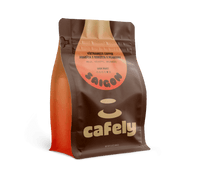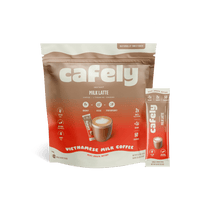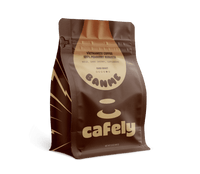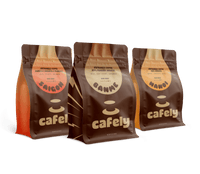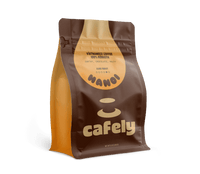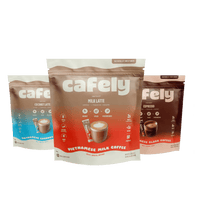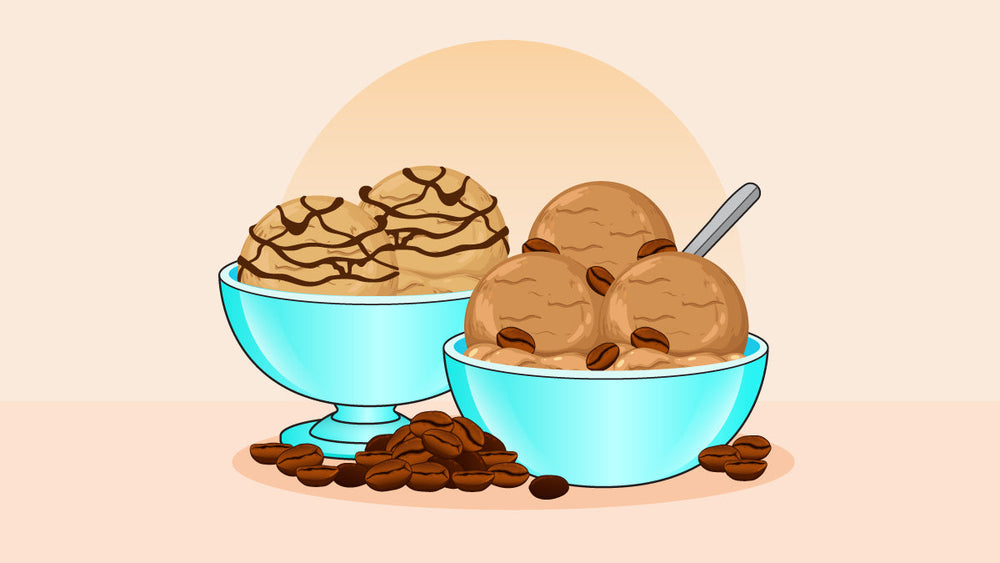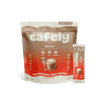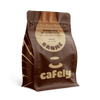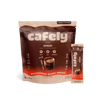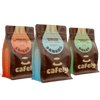Coffee ice cream is an indulgent treat perfect for sweet-toothed coffee lovers. However, for those interested in its caffeine content, this dessert can raise questions.
Many brands don't list the milligrams of caffeine per serving, and the content can vary from brand to brand.
So, does coffee ice cream pack the same punch as a cup of coffee? Is a scoop enough to keep you awake? Or, can you eat coffee ice cream at any time of day without messing up your sleep schedule?
In this article, we'll be looking at the caffeine content of eight different ice cream brands and comparing the strength to regular-strength drip coffee…
How Much Caffeine in Coffee Ice Cream (By Brand)
The exact amount of caffeine in coffee ice cream varies by brand. Although coffee ice cream contains minuscule levels of caffeine compared to hot and cold brewed coffee per serving, some brands are stronger than others.
Here’s the caffeine content of eight of the most popular store-bought coffee ice creams:
1. Häagen Dazs Coffee
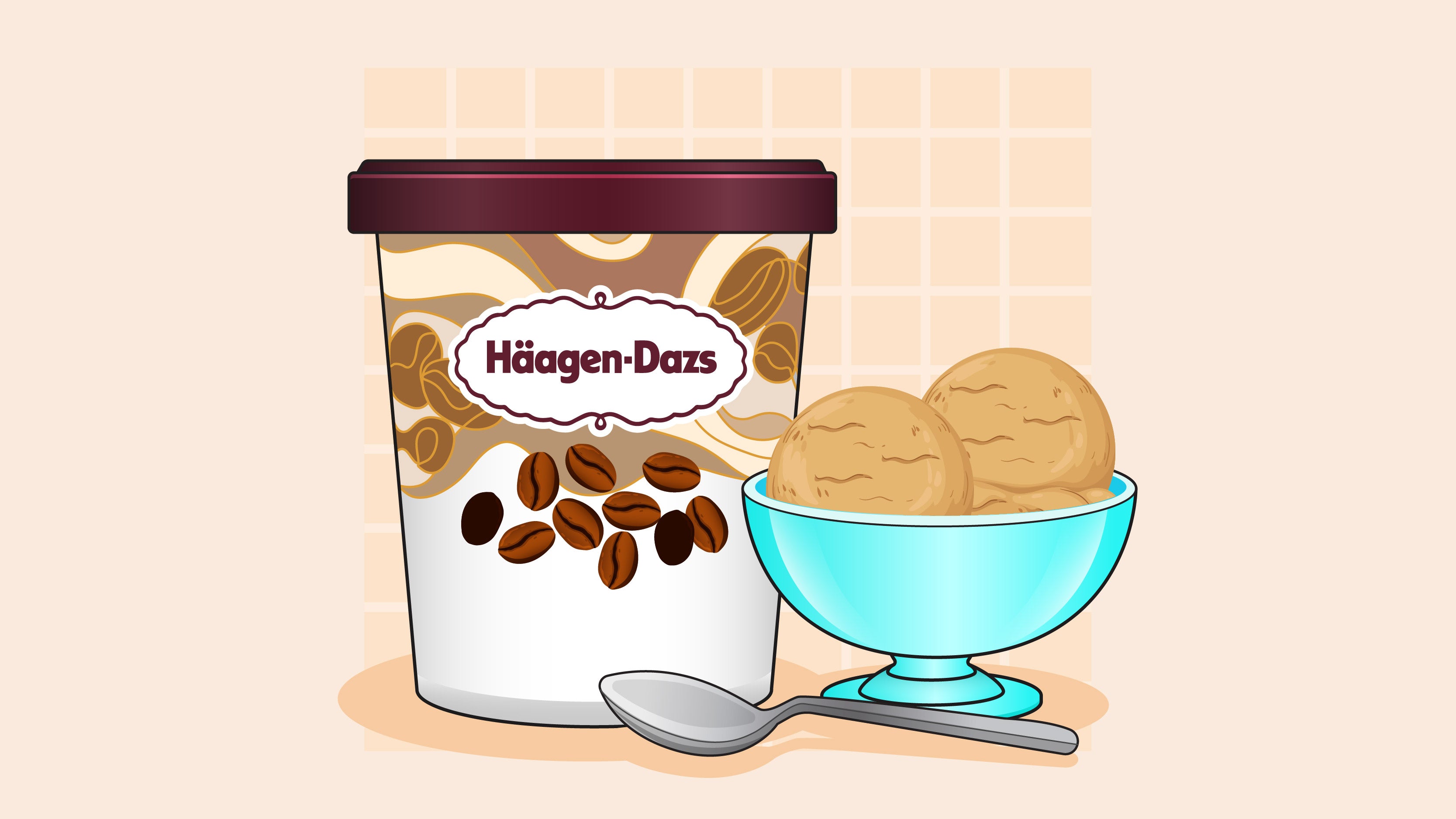
One half-cup serving of Häagen Dazs Coffee ice cream contains 21.6 mg of caffeine, which is slightly more than the caffeine content in 55 mL of regular drip coffee.
2. Turkey Hill Colombian Coffee

Turkey Hill’s Colombian Coffee ice cream contains around 11 mg of caffeine per half-cup serving. That’s the same as just 28 mL of regular-strength drip coffee.
3. Tillamook’s Coffee Almond Fudge
A half-cup serving of Tillamook’s Coffee Almond Fudge ice cream contains just 5.4 mg of caffeine. That’s equivalent to a measly 13.6 mL of regular-strength drip coffee.
4. Ben & Jerry’s “Coffee, Coffee BuzzBuzzBuzz!”

A half-cup serving of Ben & Jerry’s Coffee, Coffee BuzzBuzzBuzz” ice cream contains 45 mg of caffeine. That’s equivalent to 113.7 mL of drip coffee — just under half a regular-sized coffee mug.
5. McConnell's Coffee
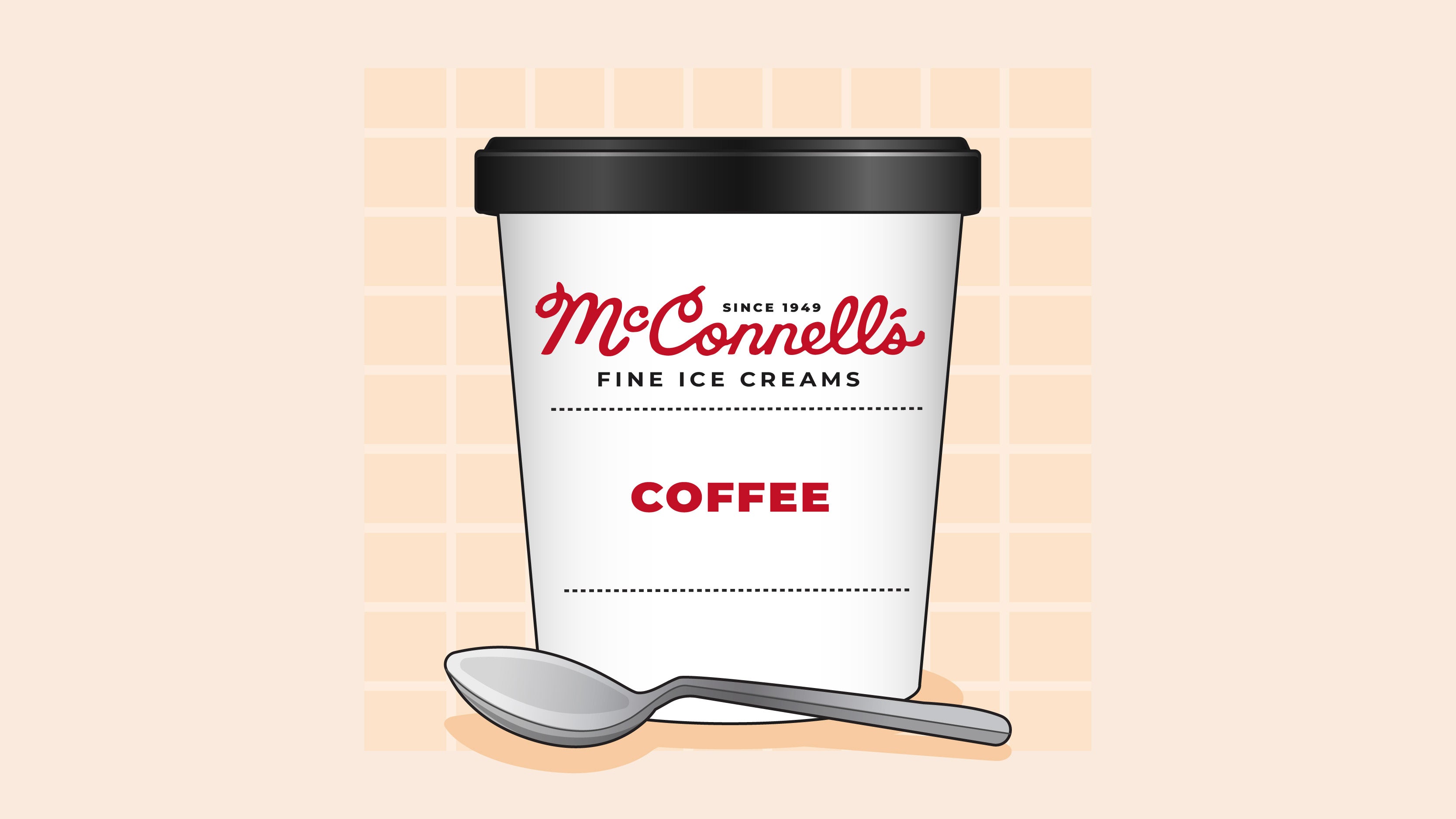
McConnell’s Coffee ice cream contains around 47.5 mg of caffeine per half-cup serving. That’s the same as 120 mL of regular drip coffee — exactly half a regular-sized cup (240 mL).
6. Trader Joe's Coffee Bean Blast

Trader Joe's Coffee Bean Blast contains three to five mg of caffeine per half-cup serving. That's the same amount of caffeine as 10 to 13 mL of regular drip coffee.
7. Graeter's Vienna Coffee

Graeters doesn't display the caffeine content in its Vienna Coffee ice cream. They use a blend of Sumatran and Colombian arabica beans to make the ice cream, and the flavor is strong. Although we're unsure of the exact amount of caffeine per serving, it's likely higher than 50 mg of caffeine — around the same as half a cup of drip coffee.
8. Adirondack Creamery's High Peak Perk

Adirondack Creamery doesn't display the amount of caffeine in its High Peak Perk ice cream. However, the brand claims a serving is strong enough to feel the energizing effects of caffeine. The ice cream is infused with espresso and flecks of roasted arabica coffee beans.
Adirondack Creamery's High Peak Perk ice cream could contain as much as 100 mg of caffeine per half-cup serving if the ice cream is as strong as the company claims. A caffeine content that high would put it on the same level as a strong cup of drip coffee, pour-over, or a brew made with a French press.
The Caffeine Content in Homemade Coffee Ice Cream
Most store-bought coffee ice creams contain only trace amounts of caffeine — but homemade versions can be surprisingly strong.
That’s because the caffeine content depends on how the ice cream is made: the type of beans, brew strength, and how much coffee is used in the recipe.
Here’s what you need to know:
A typical homemade recipe uses a double shot of espresso (about 150 mg caffeine) for every 2 cups of ice cream. That’s around 37.5 mg of caffeine per ½ cup serving — comparable to a can of soda.
Want it stronger? Brew with robusta beans, which have twice the caffeine of arabica. A robusta double shot can push a serving to 75 mg of caffeine — equal to a full espresso.
Prefer it milder? Use decaf coffee, reduce the coffee ratio, or opt for low-caffeine beans.
If you're watching your caffeine intake, homemade is the way to go. You can dial it up or down to suit your needs.
FAQs: Coffee Ice Cream

Want to learn more about coffee ice cream and the caffeine content in other types of coffee?
Check out the answers to the FAQs below:
1. Is Coffee Ice Cream Safe for Children?
Coffee ice cream is generally safe for children, but it depends on the caffeine content and the child’s sensitivity to caffeine.
Most coffee ice cream contains 20 to 40 mg of caffeine per adult serving — significantly less than a cup of coffee or tea. A child-size serving would contain 10 to 20 mg per serving, which is less than half the amount of caffeine in a 12-ounce can of Coke.
2. Does All Coffee Ice Cream Contain Caffeine?
No. Not all coffee ice cream contains caffeine. Several popular ice cream brands sell coffee-flavored ice cream without caffeine. Even regular coffee ice cream is so low in caffeine you're unlikely to notice any effects from the substance.
3. Can Coffee Ice Cream Keep You Awake?
You’d have to eat a lot of coffee ice cream to notice any energizing effects that will hinder sleep. However, if you’re particularly sensitive to caffeine and/or sugar, it’s probably best to avoid eating coffee ice cream too close to bedtime.
4. Can Pregnant Women Eat Coffee Ice Cream?
Yes. Pregnant women can eat coffee ice cream and drink coffee. Pregnant women should limit their caffeine intake to less than 200 mg per day — a serving of coffee ice cream is well under this limit.
5. How Much Caffeine in Espresso?
A single shot of espresso made from arabica coffee beans contains around 75 mg of caffeine. However, this figure varies depending on the beans used, roast level, grind size, and even the machine used to brew the coffee.
6. How Much Caffeine in Red Bull Energy Drink?
A single 8.4-ounce can of Red Bull (original) contains 80 mg of caffeine. It also contains 27 grams of sugar and 105 mg of sodium.
7. How Much Caffeine in Instant Coffee?
A typical eight-ounce cup (240 mL) of instant coffee contains 30 to 60 mg of caffeine. However, this figure can vary depending on the brand and how much instant coffee is used to make the brew.
8. What's the Strongest Type of Coffee?
The strongest type of coffee bean is robusta. Robusta coffee contains around twice the amount of caffeine as arabica coffee. The strongest brew method is ristretto — a more concentrated form of espresso.
9. Does Dark Roast Coffee Have More Caffeine Than Light Roast?
Contrary to what many people believe, dark roast coffee doesn't have more caffeine than light roast coffee. During roasting, coffee beans lose water and expand, so dark roast beans are less dense than light roast beans. If you measure coffee beans by the scoop, a light roast will contain more caffeine.
10. How Much Caffeine Is Safe to Consume in a Day?
The Food and Drug Administration (FDA) recommends that adults consume less than 400 mg of caffeine per day. That’s around six regular eight-ounce cups of coffee (maximum).
